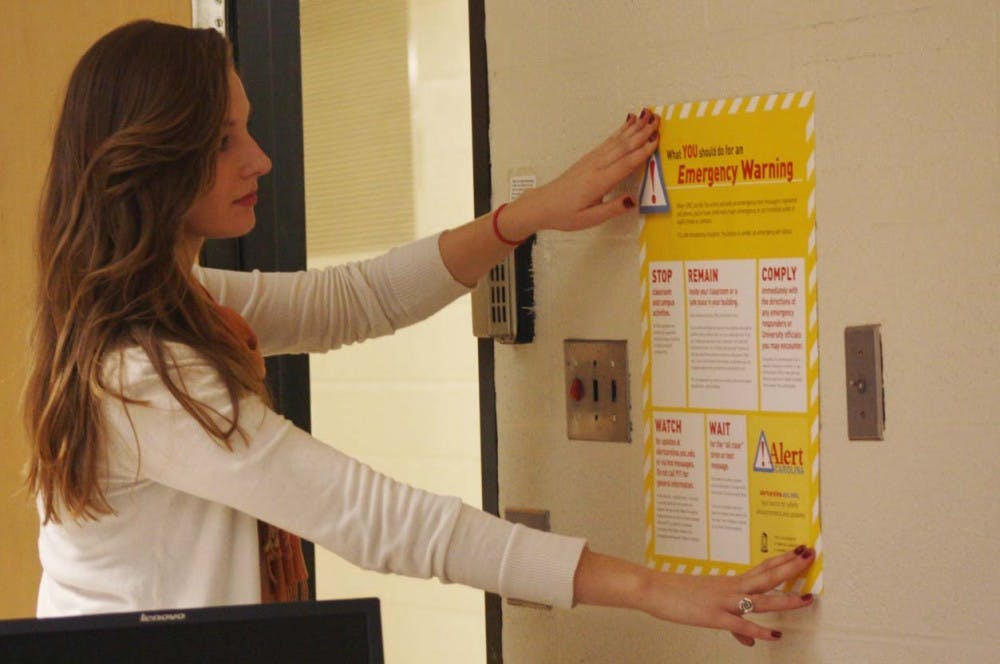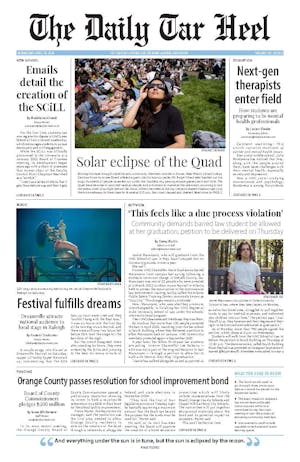When confronted with the most serious of campus emergencies, UNC students and faculty can now turn to a bright yellow sign for help.
The University has developed a poster designed to eliminate confusion about what to do in potentially life-threatening situations.
The effort comes in response to confusion following the first use in September of Alert Carolina’s revised emergency warning system.
The posters, which will go up in classrooms, lab spaces and libraries this week, provides information about emergency warnings — the most severe class of notification.
The modified Alert Carolina, which includes three classifications of emergency, was put to the test on Sept. 6 when an emergency warning was broadcast twice in response to two tornado warnings.
During emergency warnings, sirens sound and text messages are sent to signal a life-threatening situation.
Although administrators deemed the new system a success, some students and faculty reported confusion about correct classroom procedure. Some said they didn’t receive text messages quickly enough or hear the sirens. Some classes continued, they said, despite the warnings.
Jeff McCracken, chief of campus police, said groups that evaluated the system’s performance recognized this.
“It became obvious that we needed to find some kind of mechanism to communicate what you should do if the siren sounds,” he said.



